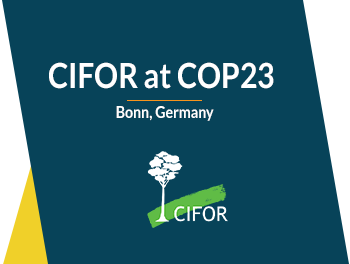The Environmental and Social Assessment: In addition to the information on Cancun Safeguards, funding proposals are required to include a due diligence report prepared by the AE together with the host country. This due diligence report will contain assessments describing the extent to which activities undertaken in the past leading to the results are consistent with GCF policies. In this context, applicants will need to provide an Environmental and Social Assessment (ESA).
The scorecard applies a ‘pass or fail’ evaluation to whether proposals are consistent with the GCF policies, including the Environmental and Social Safeguards (ESS), currently using International Finance Corporation standards, the risk management policy, the gender policy, monitoring and evaluation, and prohibited practices.
This ‘retroactive’ application of GCF policies was a major concern of the parties in the negotiation. The indigenous peoples policy, which has not yet been agreed upon by the GCF, is not specifically mentioned except in a footnote to say it will apply through the Cancun Safeguards and the GCF ESS for activities that have been undertaken in the past.
‘Retroactive’ application of GCF policies was a major concern of the parties in the negotiation
The ESA will need to show how environmental and social risks have been identified, assessed and managed, and how activities comply with national requirements. The ESA will be taken into consideration by the Secretariat in its second-level due diligence and the Independent Technical Advisory Panel (ITAP). The ESA will also include a description of how stakeholders were identified, informed and consulted, and how they have participated, including any concerns and issues raised. The relevant grievance redress mechanisms will need to be be described, as well as describing complaints received and their resolution.
No transfers or offsetting: Applicants will need to provide evidence that emissions reductions being paid for by the GCF will not be transferred, offered for payments, or used for other purposes, including offsetting. The results paid for will not be transferred to the GCF and will no longer be eligible for any other arrangement. Countries will also need to show that no other party has a competing claim.
Use of proceeds: As a major forward looking component of the policy, the proposal will be required to include a description of how the use of proceeds will be consistent with GCF policies, including the ESS, the gender policy and the soon to be agreed indigenous peoples policy, and meets the requirement that the proceeds will be used to implement to the country’s Nationally Determined Contribution (NDC), national REDD+ strategy and/or low-carbon development plans and policies.
Information will be sought as to the use of funds to contribute to the long-term sustainability of REDD+ activities, including NCBs, as well as to facilitate management of financial, technical and operational social and environmental risks, among others. Countries must provide a description of the use of proceeds, including activities to be conducted, stakeholders involved and timeframes, consistent with GCF policies. Documentation concerning the use of proceeds may also include a benefit-sharing plan, however, this does not appear to be mandatory.
Other information required: Other information will be required, including: additional information related to safeguards; an indication of expected results in subsequent years; how different financing contributed to the achievement of the results to ensure there is no double payment; information related to NCBs; and how a country intends to scale up sub-national REDD+ to national.
Once the Secretariat provides its second-level due diligence, the ITAP will undertake its assessment. The ITAP assessors will be drawn from UNFCCC-accredited land use, land-use change and forestry (LULUCF) experts, as well as selected REDD+ experts. The Secretariat will then provide a recommendation to the Board, which will make a decision based on the second-level due diligence and the ITAP assessment.
Once approved, legal arrangements will be entered into through a Fund Activity Agreement (FAA), and the GCF has the right to seek repayment of funds where activities are found to be inconsistent with the requirements, including GCF policies, and premised largely on information obtained through a yearly simplified reporting process. The fund may also investigate proposals made.
NEXT STEPS
The Secretariat will now develop templates for the concept note and the full proposal, as well as guidance for NDAs and AEs to make their applications. It is expected that much of this material will be provided by December 2017, and we can expect to see proposals made during 2018.
The guidance will need to cover areas such as the simplified reporting process, as well as information on how to apply the scorecard, for example, to ensure that each of the safeguards are adequately assessed and respected in a way that is transparent, consistent, comprehensive and effective. It will need greater clarity on how to assess NCBs and on the powers of the Fund when undertaking investigations, for example, the power to make site visits and obtain confidential information. Analyses of experience and progress made to achieving objectives will be undertaken over the next two years and presented to the Board by the last meeting in 2019.
As it is likely that the GCF will set the standard for REDD+ going forward, it will be important to research, track and analyze the way this process is implemented to inform new improvements on policy development expected to occur toward the end of the pilot. The level of documentation that will be generated through the AE submissions, the Secretariat’s due diligence, the ITAP assessments and the Board deliberations will provide new insights into the ways in which countries are implementing REDD+, and it will be important that the GCF ensures this information is publicly available.
It is likely that the GCF will set the standard for REDD+ going forward
When the final proposed decision was put to the Board, it was welcomed by most of the Board members.
The Board member for Nicaragua expressed satisfaction that this decision will attract private sector investment in REDD+. The Board member for Germany expressed his continued hope that the GCF will set a ‘gold standard’ for environmental integrity and robustness through REDD+ and that proposals will need to be considered closely for their transformational potential, including improvements to reference levels and preventing leakage. The Malaysian Board member considered that the GCF is now in a serious mode to show the world that countries are able to reduce emissions with good forest governance, and the United Kingdom said the outcome was very much in the spirit of compromise, and was pleased to see the 2019 review built into the decision, expecting to build a more robust system in the future.
South Africa, however, would not support the decision. The indigenous representative for observers expressed dissatisfaction at the lack of inclusion of the indigenous peoples policy for events that have occurred in the past, and sought a commitment from the Board to approve the indigenous peoples policy at the next Board meeting in early 2018, after its postponement in this round.

